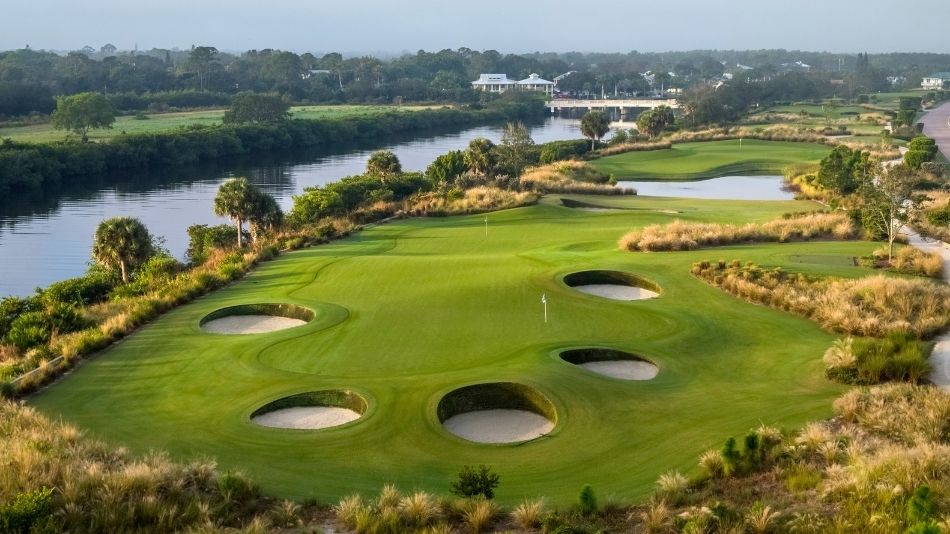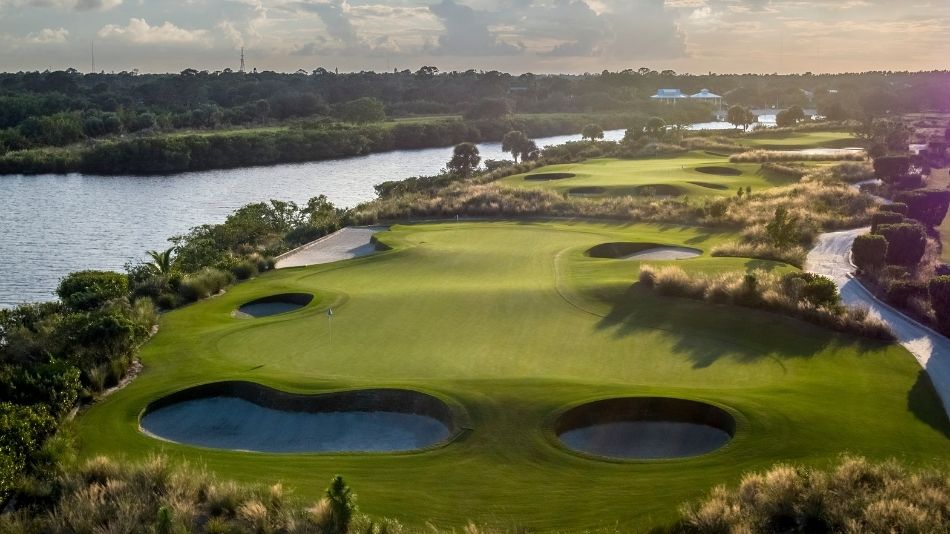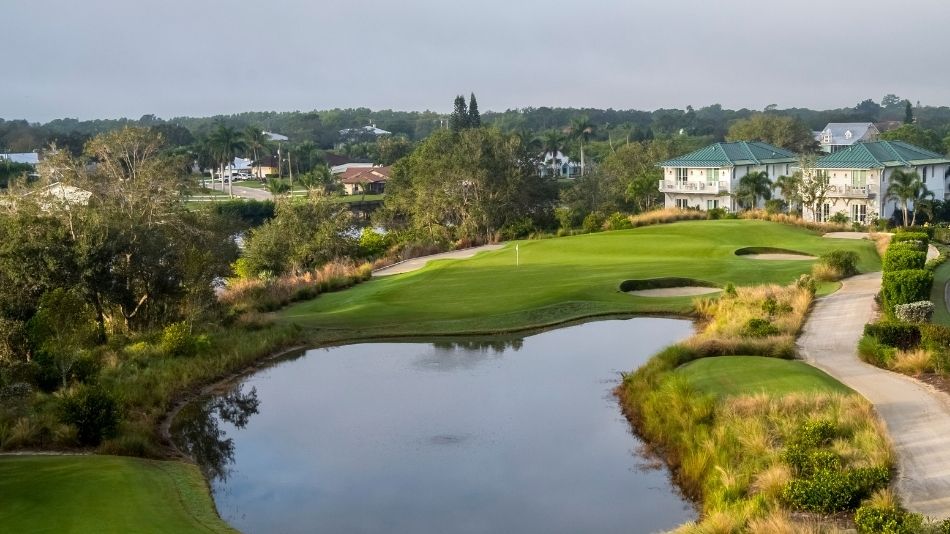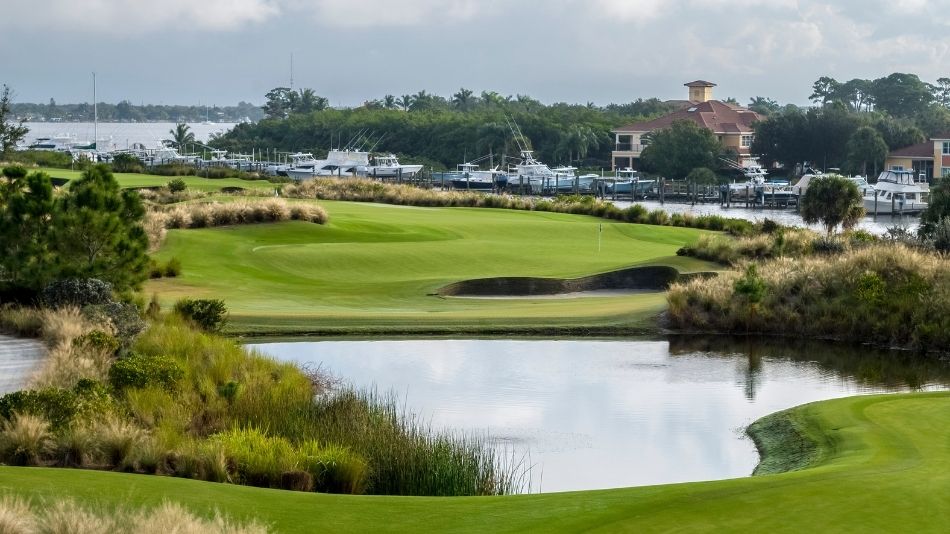The Harmon Course at Floridian National: Seeing double
GCA spoke with Jon Schmenk of Norby Golf Design about the nine-hole par-three layout he designed with renowned golf instructor Butch Harmon and former PGA Tour professional Kelly Gibson at the Floridian National Golf Club in Palm City, Florida.
Golf courses that aren’t 18 holes are seeing a boom in recent years – the National Golf Federation recently reported that six of the 19 new course openings in the United States in 2021 were par-three layouts. And at GCA we’ve recently reported on projects such as Nathan Crace and Robert Trent Jones Jr’s Otter Creek, Beau Welling’s short course at Omni Amelia Island Resort, and Lassi Pekka Tilander’s par-three layout for Pickala Golf in Finland.
We spoke with Schmenk about the design of the Harmon course, which has been open for just over four years.
How did the opportunity to build this course with Butch Harmon and Kelly Gibson come about?
Kelly and I have been friends since 2007 when we teamed up for the renovation of Joseph Bartholomew Golf Course in New Orleans following the devastation of Hurricane Katrina. Kelly is friends with the president of Floridian National Golf Club, Giles Kibbe, and owner Jim Crane. I was introduced to Giles and Jim in 2010.
When the time came to add a par-three golf course [the club has a Tom Fazio-designed 18-hole course], Kelly and I were asked to be the designers with input from Butch Harmon. Butch has an established state-of-the-art learning centre located on the property where his son, Claude, teaches a number of PGA Tour professionals.
The development of the Harmon Course was under a very tight schedule with less than a year from initial design to the course opening. Construction, by Duininck Golf, began at the end of June 2017 and was completed in October, with the course opening in December. It was an amazing accomplishment considering Hurricane Irma flattened most of the feature shaping in mid-September.
What was the site for the course like?
The Harmon Course sits on 8.2 acres bordered by Bessey Creek and the St. Lucie River to the southeast and the 18-hole golf course to the northwest. The site, which was originally planned for luxury homes, was very flat and void of any vegetation. With the golf corridor only ranging between 140 to 180 feet wide, the course had to be creatively designed to safely route nine holes while being aesthetically pleasing, environmentally sensitive, and provide a true test of golf for the PGA Tour professionals who frequent Floridian National, while still being enjoyable for the varying skill levels of its members.
What did you have to consider when designing and building the course?
The architectural test was to create a golf course that would fit into a very tight piece of property, would be fun to play, and present a unique golf experience not encountered anywhere else.
To achieve these goals, a nine-hole routing was developed that criss-crossed lines of play while providing alternate tee areas (not necessarily formal tee boxes) on most holes. Additionally, sand bunkers were constructed utilising the revetted-faced EcoBunker system, two man-made ponds were strategically integrated into the design, incorporated double greens and the site was shaped to form creative contouring and mounding. Being a short course, the greens were oversized to allow for numerous pin placements, offering a wide variety of shot options – including the opportunity to play to different greens from the same tee area if desired.
The criss-crossing nature of the layout allowed for a variety of golf holes of differing lengths. The EcoBunker system was employed to not only give the new course a unique and interesting look but to also preserve space. The near-vertical bunker faces allowed for the development of sand bunkers that didn’t require a large amount of space needed for grading and shaping. In addition, the EcoBunker system is rarely experienced in southern Florida.
To reduce confusion as to what flagstick to play towards on holes with double greens, flags of differing colours are used depending on the direction of play. For holes playing south – green flags. For holes playing north – white flags.
How was the environment protected?
Both the maintained turf and landscape plantings are irrigated with reclaimed water from a nearby water treatment plant. With ever-tightening restrictions on the use and availability of potable water for irrigation, using reclaimed water not only helps preserve potable water for human consumption but it is a less expensive water source for irrigating the plants and turf.
To protect the adjacent St. Lucie River and Bessey Creek from pollutants, all run-off and irrigation water not consumed by the plants is collected and transferred to the central part of the property where it goes through a series of stormwater ponds to filter the water before finally being released into the adjacent river/creek.
The goal of many of our projects is to create a sustainable and environmentally friendly golf course. Minimising the amount of maintained turf on the Harmon Course reduced the resources, such as manpower, equipment and irrigation, necessary to maintain the golf course. Only 50 per cent of the golf course’s 8.2 acres is maintained turf. Over 30 per cent of the course was developed into sandscape areas. These areas are landscaped with native trees, shrubs and grasses that require minimal irrigation and are attractive to native wildlife. Further, the use of synthetic turf in faces of the bunkers are made from recycled sports fields.
We are proud that this project, through all its challenges, resulted in such a unique, fun, beautiful and environmentally conscious golf course that is thoroughly enjoyed by all that get the chance to play it.
| Slideshow HTML |
-

Evan Schiller
The second (foreground) and eighth holes on the Harmon course at Floridian National share a green
-

Evan Schiller
Another large double green, shared by the first (foreground) and ninth holes
-

Evan Schiller
The large greens, such as at the fifth, pictured here, were designed to accommodate numerous pin placements
-

Evan Schiller
The course plays alongside the St. Lucie River
|
| ADd Image Credit here for home page | Evan Schiller |